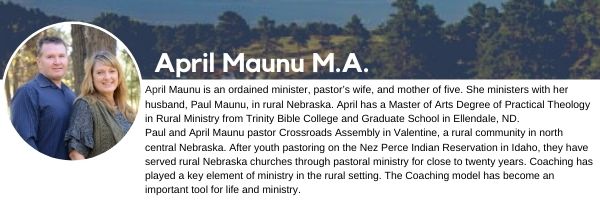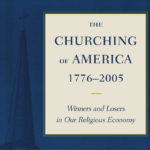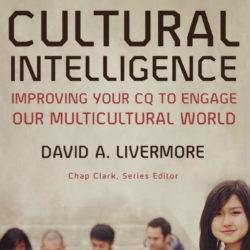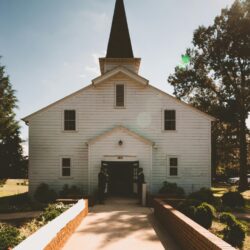A Qualitative Study and Historical Research of the Church’s Successes and Failures on the Rosebud Reservation
By April Maunu
Using qualitative research and interviews, this thesis endeavors to answer the question of what successful ministry looks like on the Native American reservations and suggest strategies that may be procured as a model of ministry to reach the communities on the Rosebud Reservation.
This study addresses the obstacles and problems in making Christ known among the Native American people and attempts to identify key principles for successful, long-lasting ministry on the reservation. Part one of the paper includes a brief history of the Rosebud Reservation along with an analysis of main issues affecting Native American ministry, followed by a theological review, and concluding with a definition of successful ministry among the Native Americans. Part two examines qualitative research through interviews from Rosebud Reservation ministry leaders followed by additional interviews of ministers of Native American ministries on various reservations. The study concludes with possible principles and suggestions for successful ministry on the Rosebud Reservation as defined in the first part of the thesis.
The Rosebud Reservation, home to the Sicangu (Brule) tribe of the Lakota Sioux, established its location along the southern border of South Dakota, east to the Pine Ridge Reservation in 1878.[1] The Native Partnership website states, “The Rosebud Reservation is economically depressed and ranks second (after the Pine Ridge Reservation) in per capita income on Plains Reservations. Unemployment sometimes reaches over 80%.”[2] Extended families often live together in houses of disrepair. Many Natives struggle with drugs and alcohol, furthering the disintegration of family units. Children often experienced shuffling from one house to another, growing up in confusion and uncertainty.[3] A resurgence of culture and traditional religion over the past fifty years created a dichotomy of the past and present and a division between those who follow the old ways, Native religion and culture, and those who do not embrace this resurgence. Traditionalist Natives, those that adhere to the traditional religion and ways of the tribe, tend to distrust anyone they consider white, those of European descent or part of the dominant society.
Mistrust and assumptions formed around the sending culture hinder the ministry efforts of people from white cultures. The Sioux culture appears complex and proud. Although they accept goods and food, they may discredit the donor’s intent if they think the motivation came from pity or if the giver showed no intent of personally investing themselves. Short term ministry teams that come for a few days out of the summer leave feelings of abandonment, causing Natives to scorn their message. A common occurrence, community members may have a pile of items given by various ministries but remain internally unaffected by the gospel. Ministries that approach Natives with tangible gifts in hopes of drawing them into the church often leave exhausted and depleted physically as well as emotionally with few committed followers to show for their efforts.[4]
As Spirit-filled followers of Christ, miracles demonstrate the truth of beliefs. Jesus said, “These miraculous signs will accompany those who believe…”[5] The incorporation of miracles in a worship service may demonstrate the truth of Christianity, but without a clear theological basis for understanding the identity of Jesus, the Sioux observer may account the miracle to a great medicine man, or holy man set apart as favored by the spirits to heal and see visions. A Rosebud Reservation,missionary warns that although Natives and missionaries need the signs and wonders, ministers should provide practical teachings to prevent the misunderstanding that Jesus existed as merely a great medicine man.[6] Teaching the needed theological foundations proves difficult when few if any community members attended Bible studies. Pentecostal signs and wonders provide affirmation of God’s favor when paired with an understanding of Jesus as God incarnate through contextualized discipleship furnish a complete gospel message.
This research purposes through studying the past and present ministry on the Rosebud Reservation, to bring clarity of understanding and key methods that may motivate those who desire to minister on the reservation but don’t know what to do as well as encourage those in current ministry. They do not seem to need more physical assistance in outreaches as current ministries already provide food and essential items. Disagreement over syncretism makes it difficult to partner with some ministries. This research considered methods to partner with ministers on the reservation. The research included cultural reflection concerning how white churches and ministries may connect culturally to become more inviting. The perplexity and desire to partner with Native American ministries and reach Natives in my community spurred the writing of this thesis.
A resurgence of basic gospel sharing principles surfaced through literature reviews and interviews with ministers who work with Native Americans. The unique multiculturism of the Rosebud Sioux requires the building of trust through meaningful relationships as a foundation for ministry. Interviewees indicated the need for spiritual healing of the intergenerational trauma that has prevented many Natives from finding their identity in Christ. Contextualized discipleship may provide the theology and tools Natives need to walk as committed followers of Christ. Discipleship should produce disciples that produce disciples. An increase of indigenous ministry on the reservations may facilitate an influx of Native souls transformed for Jesus. Part One of this thesis gives some foundational understanding of the issues affecting ministry on the Rosebud Reservation and the Theological basis for Native American ministries. Part Two reports on the interviews with various Native American ministers and the dialogue produced through their answers. The conclusion will procure some possible principles ministers on the reservations may implement to maximize effectiveness.
The goal of this research continues to advance the gospel among the Native Americans on the Rosebud reservation. From studying the research, pursuing meaningful relationships, contextualized discipleship, indigenous ministry, and Holy Spirit empowered inner healing on the reservations may enhance Native American ministry and bring about Christ-following transformation in Native lives.
[1] Donovin Arleigh Sprague, Rosebud Sioux: Images of America (Charleston, SC: Arcadia Publishing, 2005), 8. “The Lakota reservations of today are about one half their original size from the Act of 1889. Rosebud Reservation was established in 1878 for the Sicangu and its headquarters was located at the town of Rosebud… The original eastern boundary of Rosebud Reservation was the east bank of the Missouri River… On the south end of Rosebud Reservation were Fort Niobrara, Spars, and Valentine, all in Nebraska. Fort Niobrara was established in 1880 to protect Nebraska settlers from the Sicangu and other bands. It was just northeast of Valentine, Nebraska.”
[2]“South Dakota: Rosebud Reservation: PWNA Resources,” South Dakota: Rosebud Reservation PWNA Resources – Partnership with Native Americans, accessed March 25, 2020, http://www.nativepartnership.org/site/PageNavigator/PWNA_Native_Reservations_Rosebud.
[3]Firsthand observation by the author while substitute teaching on the reservation – the school would often have to search for kids to find out which house they were to be picked up from.
[4]Observances from experiences and conversations with other ministers. For discussion on trust between Natives and White Christians please see Chapter Four of Craig Stephen Smith, Whiteman’s Gospel (Winnipeg, Manitoba: Indian Life Books, 2006).
[5] Mark 16:17-18, ESV.
[6]Minister One interview with April Maunu, January 28, 2020.

















